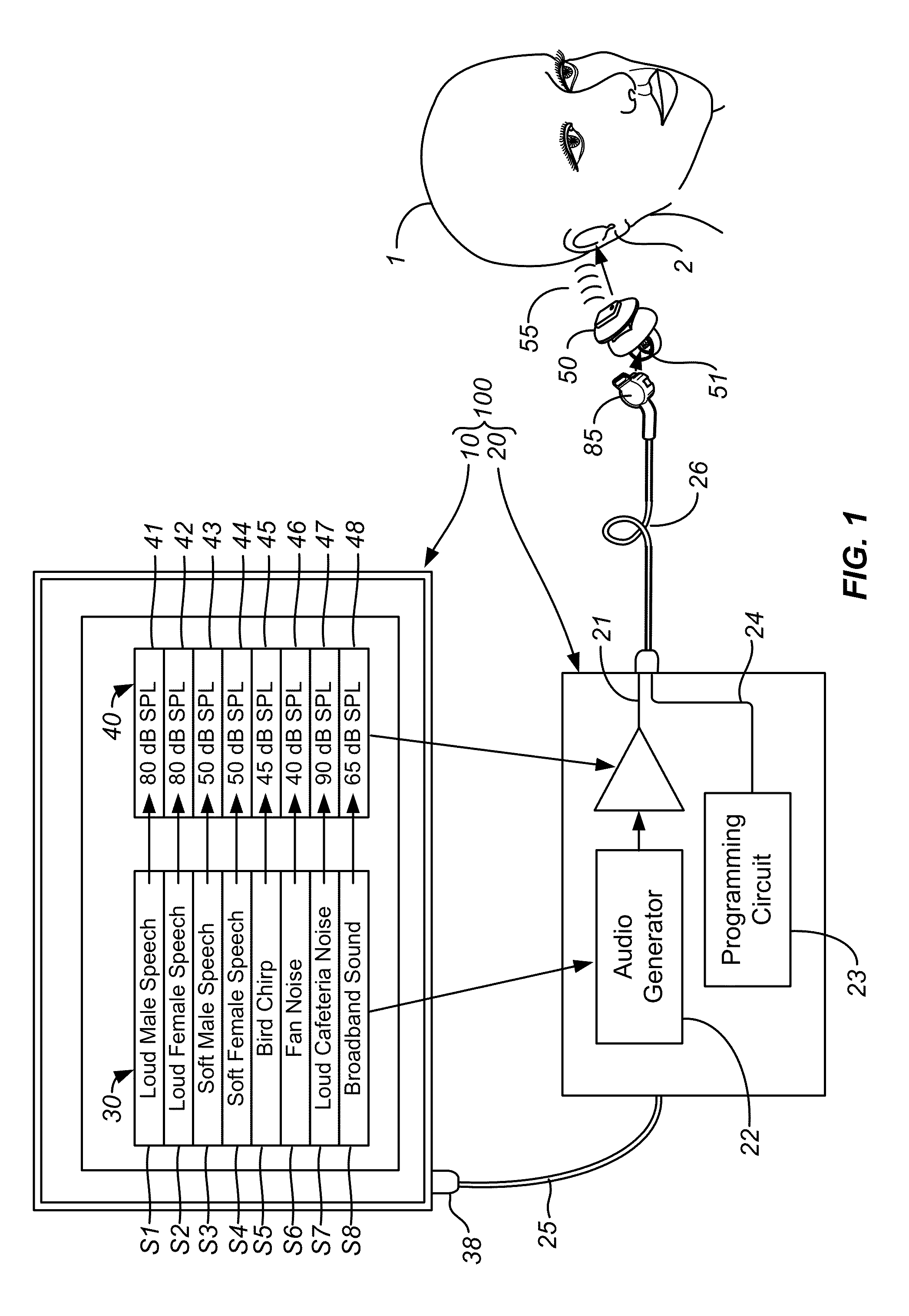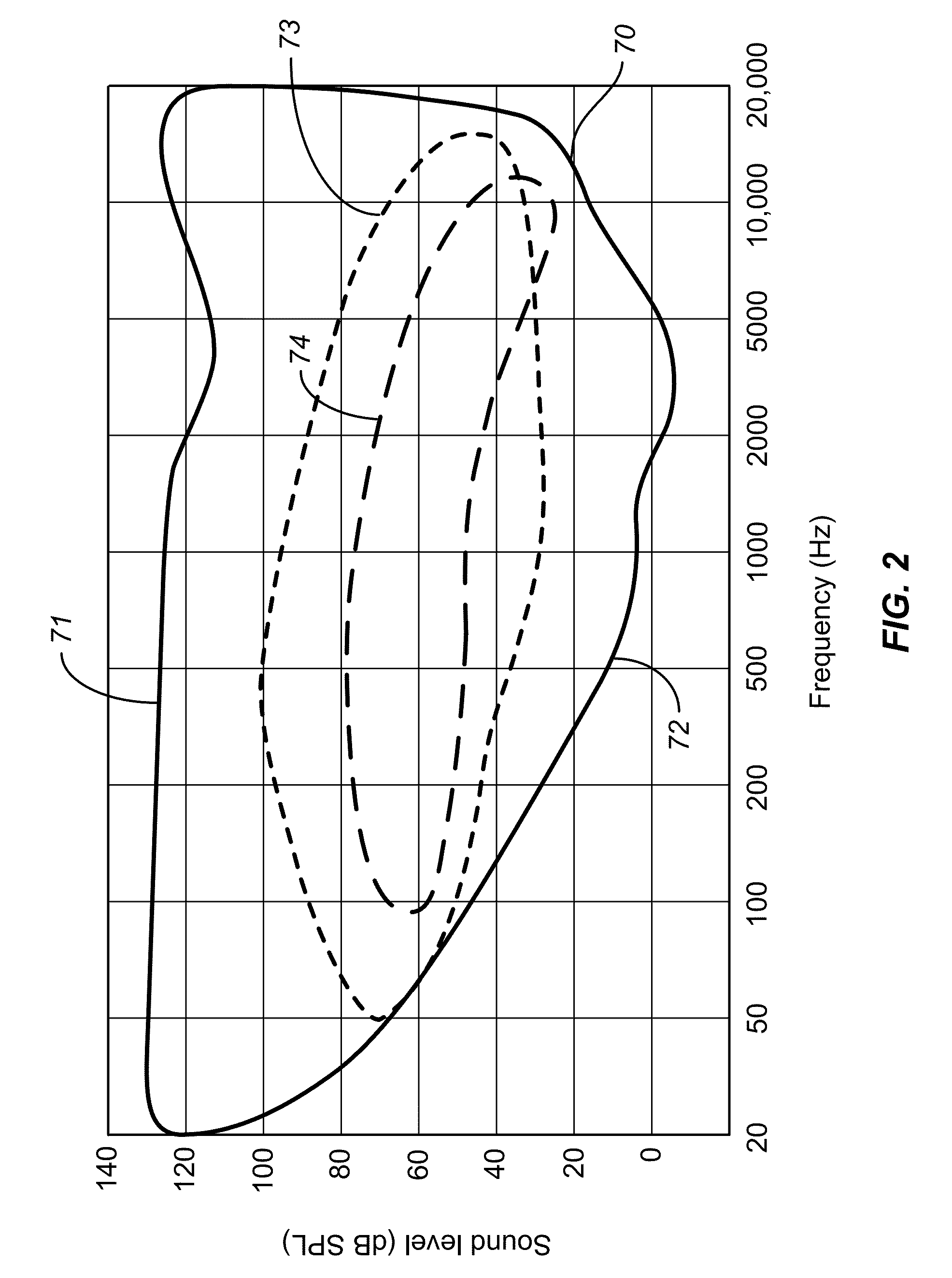Hearing aid fitting systems and methods using sound segments representing relevant soundscape
a technology of sound segments and hearing aids, applied in the field of hearing aid fitting methods and systems, can solve the problems of high cost of hearing aids, and inability to accurately represent soundscapes, and achieve the effects of reducing the cost of hearing aid acquisition, minimizing the overlap in parameter optimization, and eliminating calibration processes
- Summary
- Abstract
- Description
- Claims
- Application Information
AI Technical Summary
Benefits of technology
Problems solved by technology
Method used
Image
Examples
Embodiment Construction
[0026]Certain details are set forth below to provide a sufficient understanding of embodiments of the invention. Some embodiments, however, may not include all details described herein. In some instances, some well-known structures may not be shown, in order to avoid unnecessarily obscuring the described embodiments of the invention.
[0027]The present disclosure describes example systems and methods, as shown in FIGS. 1-12, for hearing aid fitting by a non-expert consumer without resorting to clinical settings, and particularly suited for self-fitting by a hearing aid consumer 1. Referring to FIG. 1, in one embodiment, the method may involve using a fitting system 100 to deliver a sequence of test audio signals 21 (FIG. 1) from an audio generator 22 housed within a handheld device 20, corresponding to multiple test sound segments 30, directly to an input 51 of a programmable hearing aid 50 in-situ (while the consumer is wearing the hearing device in the ear). In some embodiments, par...
PUM
 Login to View More
Login to View More Abstract
Description
Claims
Application Information
 Login to View More
Login to View More - R&D
- Intellectual Property
- Life Sciences
- Materials
- Tech Scout
- Unparalleled Data Quality
- Higher Quality Content
- 60% Fewer Hallucinations
Browse by: Latest US Patents, China's latest patents, Technical Efficacy Thesaurus, Application Domain, Technology Topic, Popular Technical Reports.
© 2025 PatSnap. All rights reserved.Legal|Privacy policy|Modern Slavery Act Transparency Statement|Sitemap|About US| Contact US: help@patsnap.com



